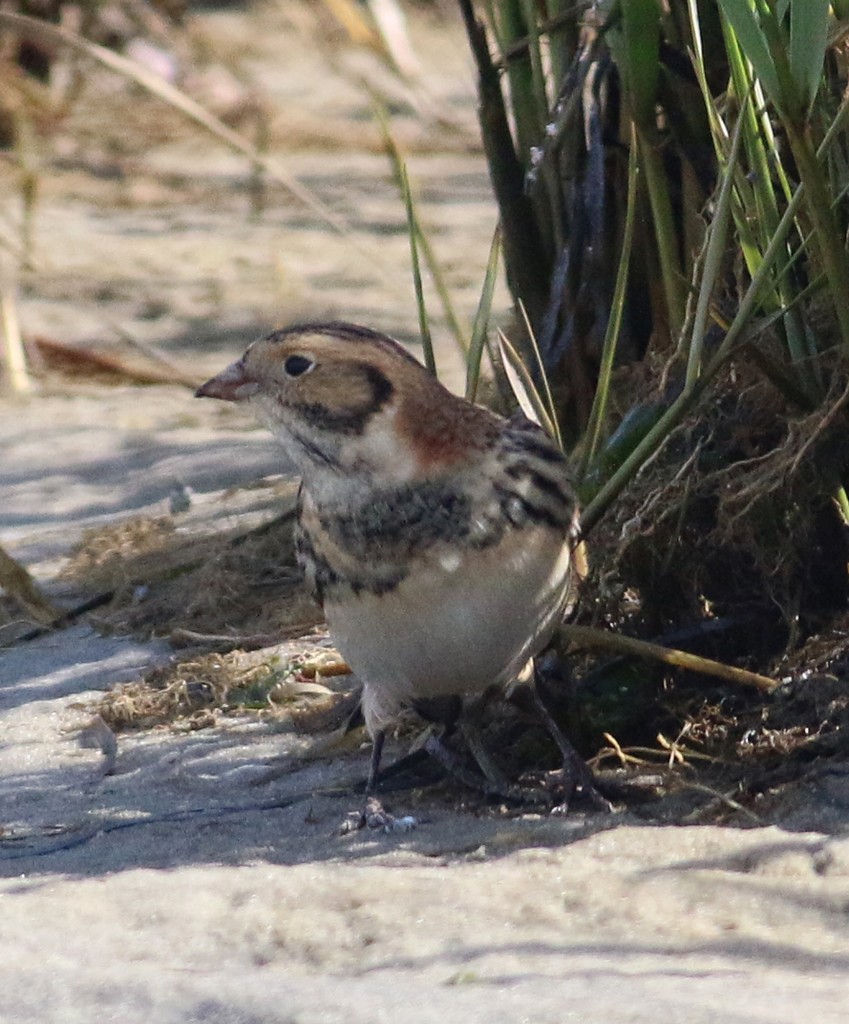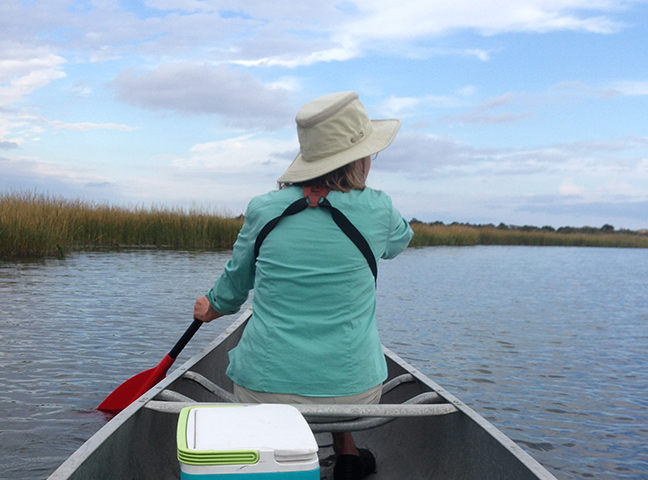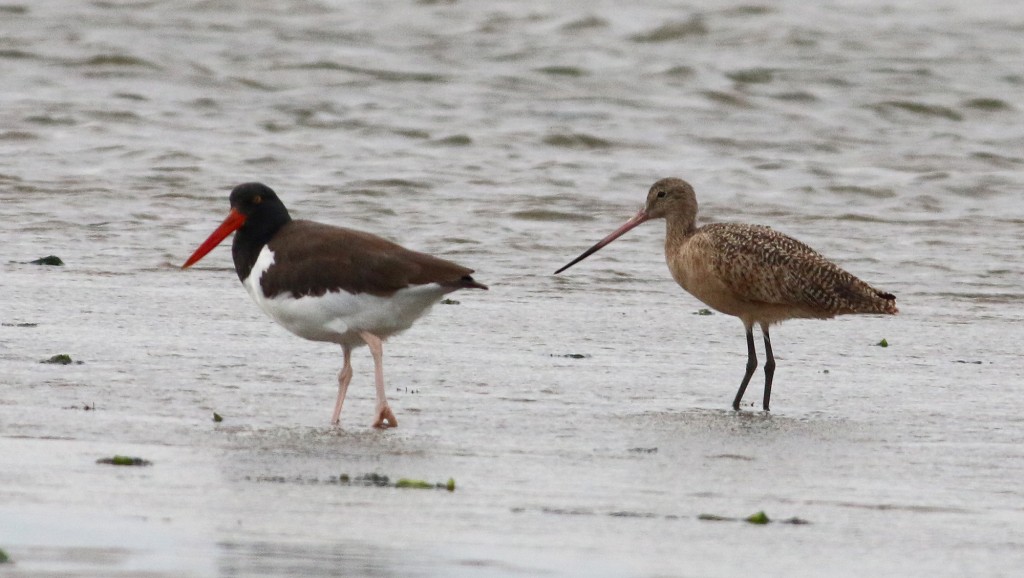It was going to be a nice fall day weather-wise; calm winds, mostly sunny, with temperatures in the low 70’s. After looking at the wind patterns (from the south) and the radar (I’m still not sure how much to trust the radar images, but I look anyway) it was not likely that many birds would have come in overnight. But how can we not go birding on such a beautiful fall day? On Monday Jeanine and I enjoyed a great day of land birding at Palmyra Cove with a nice variety of lingering warblers including five Nashvilles, and first-of-season Yellow-bellied Sapsuckers, Purple Finches, Dark-eyed Juncos, and many kinglets (in both flavors) heralding a change in the season. To balance our birding for the week, we decided to try yet one more visit canoeing in the Island Beach Sedge Islands, with a bit of walking the trails beforehand. We were not disappointed.
The trails were quiet. We spotted a kinglet here and a kinglet there. A few Red-breasted Nuthatches appeared, and a scattering of White-throated Sparrows were moving in the brush, but it was pretty quiet overall. The highlights were a Pied-billed Grebe and a FOS distant Common Loon on the dead-calm waters. Overall the birding was slow (to put it kindly). The tide was lowering so we headed out to the water hoping that the birding would be better out there.
If nothing else, it was going to be a learning experience. Despite the many trips that I’ve taken to the Sedge Islands over the past three years, I’ve never been there in October. Two years ago Larry and I tried our luck on what must have been a warm November day, but otherwise the birding-by-canoe strategy has ended in late September. Even if the birds didn’t cooperate, it would be great paddling here on a gorgeous day.
After landing on the main sand flats, we were finding the expected birds, although in lower-than-summer numbers. As expected. We were seeing the usual gulls, plenty of cormorants, and a smattering of shorebirds that were mostly Black-bellied Plovers, American Oystercatchers, Sanderlings, and Semi-palmated Plovers. Attempts to tease a golden-plover out of the flock were fruitless. A single Brown Pelican rested in the shallows, always nice to see. The medium-sized terns were all gone, but a handful of Royal and Caspian Terns remained. Then we decided to see if we could find an interesting sparrow by walking through the sparse grasses, with me calling ‘here, birdy birdy’. Sure, I know it was a sign of desperation, but sometimes you have to try to talk to them. Almost immediately a single bird flushed and flew a short ways. Our first partial looks were intriguing and left us wanting more, but it was playing hide-and-seek and not giving us enough for a definitive ID; I saw a bit of yellow on the face and was thinking Saltmarsh Sparrow, or if we were lucky, maybe a Nelson’s. Jeanine saw some black lines on the face and was thinking Lark Sparrow. It finally moved into the open on my side of a grassy cluster and to me it looked like a Longspur. I’m not as familiar with the longspurs as I’d like, so I ran back to the canoe for my Sibleys and my camera as Jeanine tried to get photos with her camera. (aside: why is it that every time I leave my camera behind a good bird shows up, and when I carry it around, things are quiet? Does that happen to you too? Are the birding gods playing with us?) After returning and getting better views, it was clear that we were looking at a non-breeding plumaged adult male Lapland Longspur!

Lapland Longspur in the shade of a grassy cluster. From our initial quick looks, that black cheek border was our first clue that it wasn’t one of the expected sparrows.

Eventually it came out fully into the open, and we could see its chestnut wing bar and its strikingly patterned plumage.
Needless to say, this bird was not on our radar. It is such a kick to find a bird that makes you say “I wasn’t expecting to see THAT!”. For what must have been a half hour or so we patiently waited while the bird moved in and out of the grasses, alternating between my side and Jeanine’s side to keep us both happy. Nobody else was in sight except for a distant pair of clammers.
As we circled the island, the icing on the cake was another visit from a Marbled Godwit, mixed in with a pair of Oystercatchers. So for the third time this year, we spot a Marbled Godwit here and it is not even the top bird of the trip.
For the rest of the day we made a brief attempt to find our old friend the Reddish Egret. We saw it here on our last four trips over the past two months, so it was beginning to feel like a regular sighting, rather than a rarity. But Red has apparently and appropriately moved on. It didn’t matter. We were still basking in the afterglow of the Longspur with big smiles on our faces.
I have come to love fall birding, when almost anything can appear.

